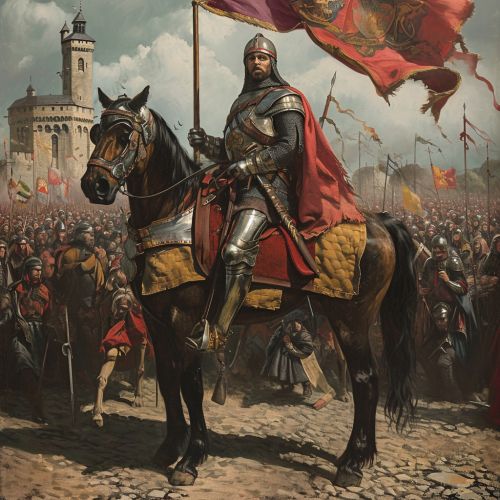Carolingian Dynasty
Early History
The Carolingian dynasty was a Frankish noble family founded by Charles Martel in the 7th century. The family consolidated its power in the 8th century, eventually making the offices of mayor of the palace and dux et princeps Francorum hereditary, and becoming the de facto rulers of the Franks as the real powers behind the Merovingian throne.


Rise to Power
In 751, the Carolingian dynasty reached its peak when Pepin the Short deposed the last Merovingian king, Childeric III, and was crowned by the Pope. This marked the beginning of the Carolingian reign, which lasted until 987. The Carolingians were the first to establish the concept of a centralized government in Western Europe after the fall of the Roman Empire. They also laid the groundwork for the future states of France and Germany.
Carolingian Renaissance
The Carolingian dynasty is also known for the Carolingian Renaissance, a period of cultural activity in the Carolingian Empire. It occurred from the late 8th century to the 9th century, which took inspiration from the Christian Roman Empire of the fourth century. During this period, there was an increase in literature, writing, the arts, architecture, jurisprudence, liturgical reforms, and scriptural studies.
Decline and Legacy
The Carolingian dynasty began to decline in the late 9th century, but it continued to rule until 987. The dynasty left a lasting legacy in Europe, influencing the development of feudalism and knighthood, as well as laying the groundwork for the territories of modern France and Germany. Despite its decline, the dynasty's influence can still be seen in the modern world.
